Leeds Creative Labs Tackles Climate Futures
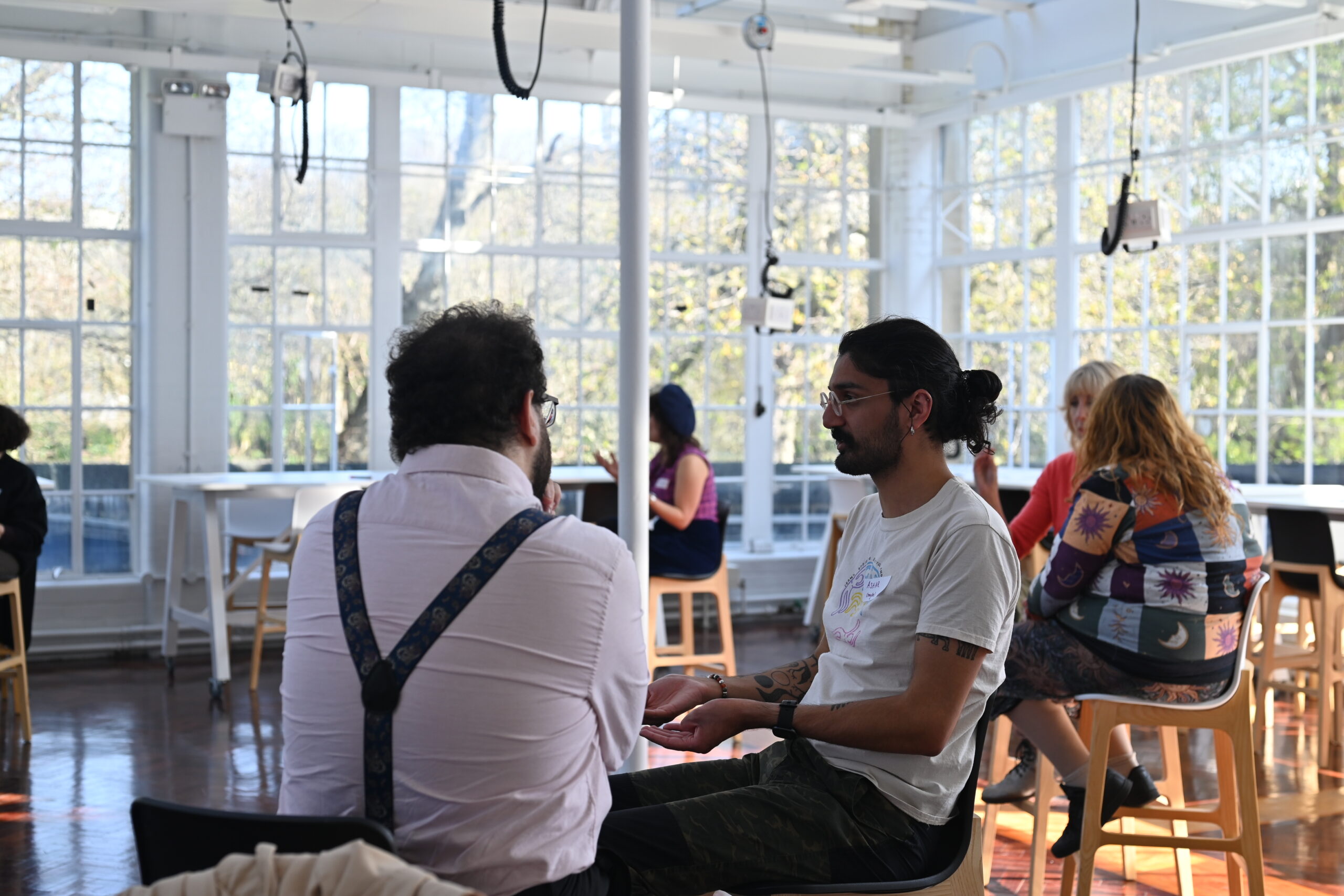
This year, the University of Leeds’ Cultural Institute has partnered with the Priestley Centre for Climate Futures for a special edition of Leeds Creative Labs focused on one of the most urgent challenges of our time: the climate crisis.
As the impacts of climate change become ever more visible, so too does the need for creative, interdisciplinary approaches to addressing them. Leeds Creative Labs: Climate Futures brings together artists and researchers to explore new ways of thinking, making and collaborating across disciplines — opening space for innovation, reflection and action.
What is Leeds Creative Labs?
Leeds Creative Labs is an interdisciplinary research exchange programme led by the Cultural Institute since 2012. It pairs artists with University of Leeds researchers to develop open-ended collaborations, free from the pressure of producing specific outcomes. The aim is to spark new ideas, ways of working and imaginative perspectives. To date, more than 150 partnerships have been formed through the programme.
For this edition, we’ve partnered with the Priestley Centre for Climate Futures — a University of Leeds research centre committed to ensuring that climate action is guided by the latest evidence, and made effective through collaboration with communities, businesses and policy makers around the world.
Meet the six artist–researcher pairs
Ruth Cherry & Mia Symonds
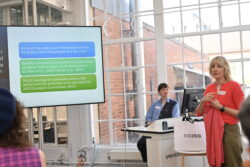

Postgraduate researcher Ruth Cherry (left) specialises in sustainable textiles, with a focus on design for disassembly, reusing post-consumer knitwear, and emotional durability in clothing. She’s also interested in how repair culture and craft can drive innovation in industry.
Mia Mai Symonds (right) is an interdisciplinary artist working primarily across sculpture, weaving, installation and image-making. Her practice is engaged with the interrogation, manipulation and interpretation of objects and materials across both the built and natural world. Mia’s work studies the notion that objects and materials have great capacity to trace human experience and ecological landscapes across time and place
Ashar Aslam & Jo Kennedy
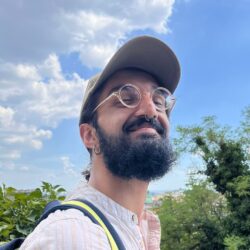
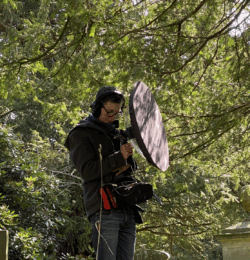
Jo Kennedy (right) is a sound artist creating immersive audio works that explore ecological issues and our relationship with the living world. As Director of the Yorkshire Sound Women Network, she also champions gender equity in the audio industry. Jo’s recent work includes commissions for Breaking Barriers Rochdale, RSPB, Northern Broadsides and BBC Radio 3.
Jo is partnered with Ashar Aslam(left), a final-year PhD student with the School of Earth and Environment and the SENSE Earth Observation Centre for Doctoral Training, working in partnership with the UK Met Office. His research focuses on high-impact weather and rainfall in Southeast Asia, and he is active in promoting access and inclusion within geosciences.
Hannah Barnett & Hannah Sibai

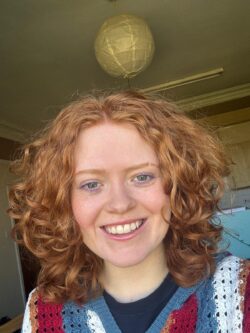
Hannah Sibai (left) is a British/Syrian designer for theatre, installation and live events. Since training at Wimbledon School of Art, she has worked on over 100 productions across the UK and Europe. Her process combines drawing and model-making to develop bold, collaborative ideas that engage audiences in meaningful ways.
She’s partnered with PhD researcher Hannah Barnett (right), whose work in the School of Geography focuses on glaciers and abrupt cryospheric events. Hannah brings experience from international research teams and is interested in collaborative storytelling shaped by lived experience and scientific inquiry.
Mallika Rana & Cat Scott

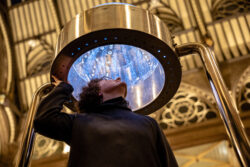
Mallika Rana(left) is a PhD researcher at the University of Leeds’ Molecules to Product Centre for Doctoral Training, following five years in industrial R&D. She is developing a new class of polyester dyes that significantly reduce water and energy use compared to current methods.
Artist Cat Scott (right) creates sensory, fluid sculptures using ephemeral materials like sound, gas, liquid and light. Her work explores natural fluid systems, womanhood and neurodiversity, and she aims to make art more accessible by exhibiting in galleries, sculpture parks and public spaces.
Elspeth Mitchell & Lauren Saunders
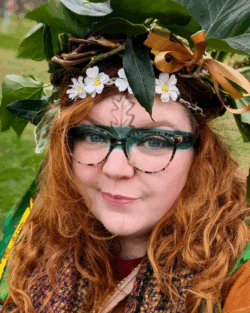
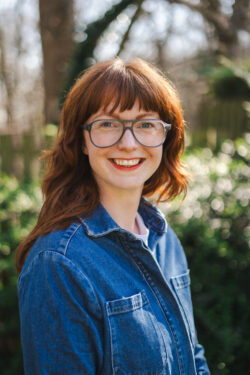
Dr Elspeth Mitchell (right), Griselda Pollock Legacy Lecturer in the School of Fine Art, History of Art and Cultural Studies, brings expertise in eco-feminism and feminist theory. She’s particularly interested in working with young people and exploring how artistic collaboration can shape eco-feminist thinking around place and climate futures.
Lauren Saunders is a Hull-based disabled artist, educator and activist. Her work spans print, sculpture and participatory projects. She is co-director of The Critical Fish, a journal exploring accessible arts writing. Lauren’s practice weaves together themes of disability, feminism, class, nature connection and climate hope.
Lone Sorensen & Parham Ghalamdar


Dr Lone Sorensen (left) is Associate Professor of Political Communication at the University of Leeds. Her research focuses on democratic processes, digital politics and climate communication. A practising artist herself, Lone is exploring how public controversies — fuelled by conspiracy theories and online misinformation — impact climate policy, and how arts and culture can help reframe the narrative.
She is working with Parham Ghalamdar (right), a UK-based multidisciplinary artist whose work traces forgotten mythologies, buried philosophies, and visual ruins, reconfiguring them into speculative worlds where memory, fiction, and futurism collapse into one another. Parham is a recipient of the UK New Artists Bursary (2023), and his work is included in the Government Art Collection. He brings a rich mix of visual language and philosophical thought to the collaboration.
Why Climate Futures, and why now?
This climate-focused edition of Leeds Creative Labs highlights the vital role creativity can play in tackling complex global issues. Whether through exploring ecological narratives, rethinking materials and systems, or reframing how we communicate climate knowledge, each partnership opens new possibilities for connection, awareness and action.
At a time when the challenges are immense, collaboration between artists and researchers offers an opportunity to innovate beyond traditional boundaries — and to imagine futures shaped by care, sustainability and collective responsibility.
Follow along as these creative journeys unfold and help shape new ways of responding to the climate crisis. A share event will be hosted in the summer open to all. Stay tuned to find out more information.
This story was originally published by the Cultural Institute.
